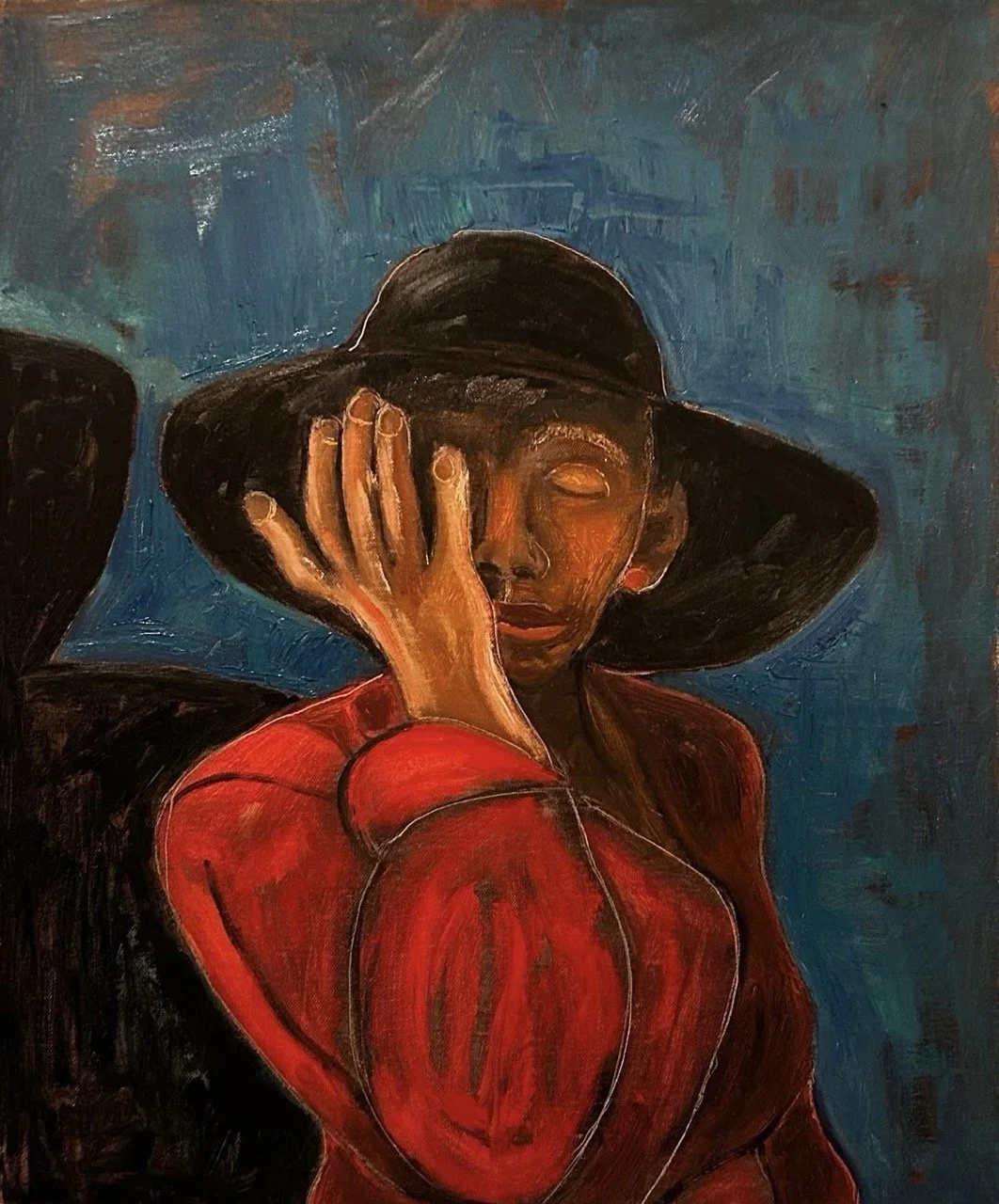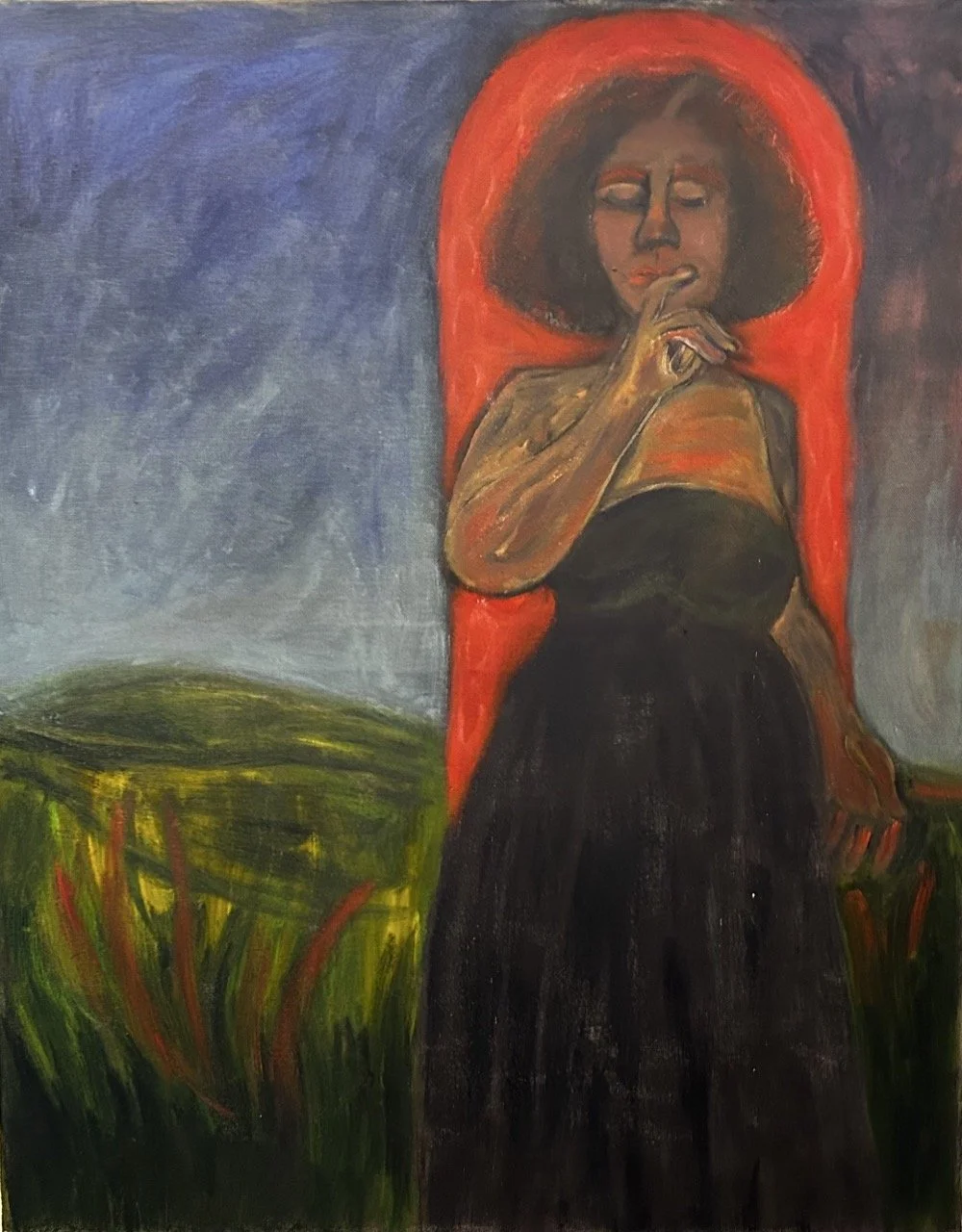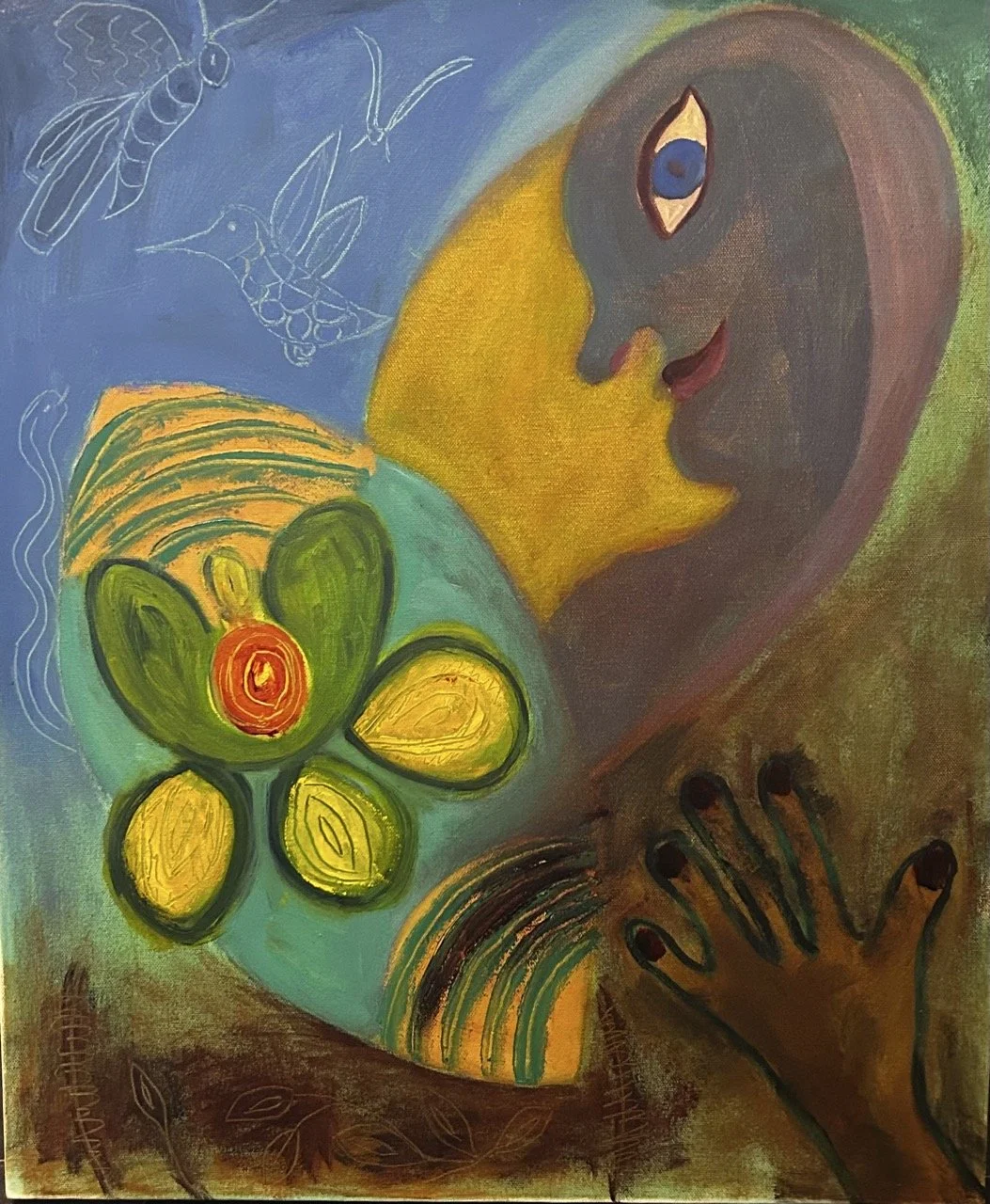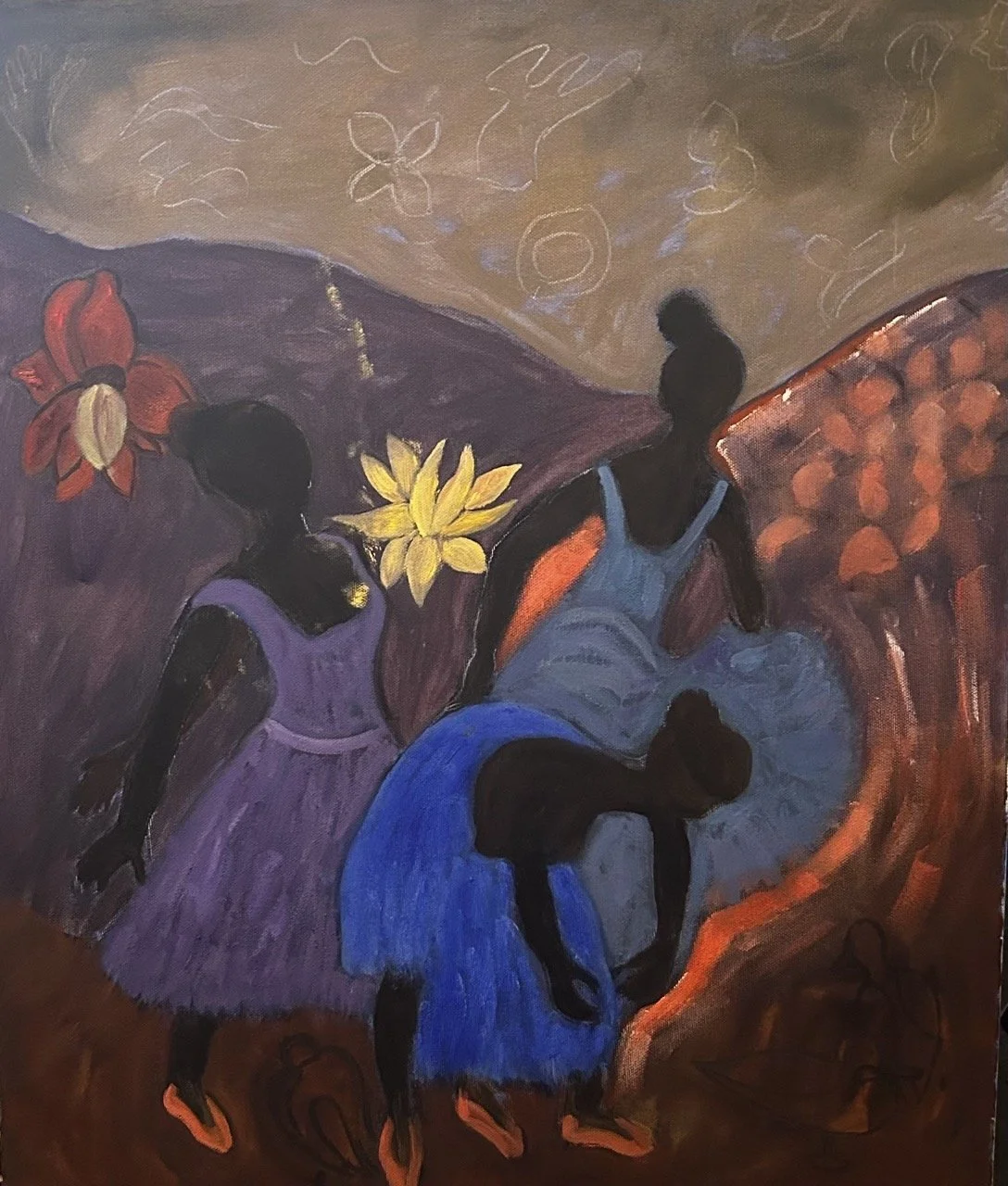Art, Family, and Vision: Frances Ryan's Connection to the Generator
Stories and Memories: an interview with France Ryan
Frances Ryan, a painter and former educator, shares her personal connections to the Generator building, from her own pattern-cutting course in the late 1990s to her family's deep involvement with the arts centre's development. Frances offers unique insights into the vision of her late husband Kev Ryan, whose passion for creating a community arts space in Loughborough helped spark what would become the Generator project.
Frances Ryan, interviewed by Pasha Kincaid
Q: Frances, could you tell us a little bit about your connection to the Generator building and the old arts college?
Frances: Back in around 1998, I did a City and Guilds course there. It was an evening course for a year in pattern cutting and garment construction. I was really into sewing and constructing my own clothes in those days.
Q: Which part of the building were you in for that course?
Frances: It was on the first floor. The room ran right across the length of the building, as I recall, so there was lots of space with some very big cutting tables where you could do your work. I really enjoyed it.
Q: What did you learn on the course?
Frances: We learned how to make blocks, which are the basis from which all clothes are made. You start with a block—these days I guess they're computer-generated, but back then they were done by hand. The measurements had to be very precise.
It's quite interesting because I'm dyscalculic, so you'd think I might find all the measuring tricky, but actually I didn't. I could relate to it, possibly because it was something I was interested in and I could see the end result.
Q: What was it like being in the building? Do you remember the other students?
Frances: I vaguely remember the tutor—I think she taught at the art college anyway, probably fashion. The other students were probably a mix of ages. I can't remember if there were any men or if it was all women. I think we all got on well together.
Q: Do you have any other connections with the building?
Frances: Yes, because a couple of years prior to that, in about 1996, my daughter Miffy started a Foundation Art course there. I used to pop in to see her sometimes. I think that was based on the ground floor. My mum used to visit her too—Grandma would arrive having been to the market, bearing gifts of fruit and whatever else for her granddaughter.
Q: Were you involved in the initial consultation around the Generator's new life as a multidisciplinary arts centre?
Frances: Not really. My involvement was very peripheral, largely just Kev talking to me about what was going on. I should say at this point that I'm Kev Ryan's widow, and he was very much involved in the whole inception and idea of a community-based arts building in Loughborough.
For many years, he'd been trying to get something going in the town, but there was always a lack of will in terms of funding and politically. Quite often when we were out and about together, he would be eyeing some building and saying, "Oh look, maybe that could be a good building for an arts venue."
Q: So you were quite aware of his vision for this building?
Frances: Very much so. He was passionate about having this community base. He really envisaged the Generator as a hub for the community and also planned that Charnwood Arts would have an office there. He was very excited about the whole thing.
When it was starting to become a reality—I suppose there must have been a CIC formed by then—he organised a few events in the Generator to show people how the space could be used. I went along to one or two of those.
Q: What happened at those events?
Frances: One that I went to had loads of boxes placed around to represent different spaces. There was some performance stuff going on, maybe a bit of circus. I can't remember all the details.
Q: Was there a buzz about the potential for the building?
Frances: I think so. Jill Vincent was involved in a lot of this as well. There weren't hundreds of people who attended these events—the audience was fairly small—but I think people were interested and wondering what could happen there.
Q: As a practising artist yourself, what would you like to see in the Generator?
Frances: I would hope that it could be an inclusive venue for all sorts of arts activities. I'm a painter—I paint in oils, and my paintings are quite vibrant. I'm developing ideas about my link to the past, to my ancestors, and also looking forward into the future. I would hope to be able to showcase some of my work there, perhaps alongside other like-minded people. It would be great to have some flexibility there at some point.
Q: Do you have any interesting stories about the building?
Frances: I've got a funny story! At one of these events that Kev organised, my oldest daughter Charlotte came along. We decided to take off and explore the building, so we sidled away and went up to the third floor. We discovered this amazing library, which was a bit like going back to a bygone era—piles upon piles of PhD theses, undergraduate theses, all sorts of books, French language books, all sorts.
Charlotte and I were wandering around going, "Wow, look at this, this is amazing!" We spent quite a bit of time exploring, and then I decided to pick out some of the books. I thought, "Well, they've been put here and nobody's using them. What's going to happen to these books? Why can't I have some?" So I gathered together two or three French books and perhaps a couple of art books, went back downstairs, and Kev was like, "Where have you been?"
"Oh, we've just been up to—"
"You shouldn't have done that! You weren't supposed to go wandering around the building!"
"But look, I've got some books. Can't I have them?"
"No, most definitely not." He was really quite firm about it. But I must admit, I did spirit them away anyway when he wasn't looking, and I still have them today. I just thought, "I'm going to take these." They probably would have gone into a skip otherwise.
Q: I see you've brought something you made from your pattern cutting course?
Frances: Yes, we made standard blocks—a trouser block, a bodice block which could be used to develop blouses and shirts, and a dress block. This one here is a classic shirt block.
[Shows a large sheet of white paper with pattern markings]
You map it all out with very precise measurements depending on your size. This is done to my size, or the size I was then—I've probably put on a few pounds since! Once we'd made the blocks, we went on to make patterns from them, and then garments from the patterns.
Unfortunately, I can't find the blouse I made from this pattern. I put it away somewhere and couldn't find it. Other stuff I made has gone west somewhere along the line with various moves. But I really enjoyed it—even though I'm dyscalculic, maybe because it's visual as well.
Q: What have you gone on to do in your career since 1998?
Frances: I carried on sewing in my spare time, but during that period I was doing a lot of supply teaching. I taught in schools across Leicester mainly, but also in Loughborough. I also taught in some special units—a primary unit out at Kirby Muxloe and a secondary unit here in Loughborough, though I don't think either of those exists anymore.
I taught various subjects when doing supply—English, even maths once, which completely freaked me out! I thought, "The children are going to know more than I do!" Supply teaching is a bit like babysitting—you've got to sort out the class and the kids. It's quite difficult really, as the kids will play up because you're not their usual teacher.
In the last 12 years before I retired in 2020, I decided to do another course in learning disabilities (as it was called then—it's now called neurodivergence or neurodiversity). I did that with the University of Leicester and got a qualification specifically in dyslexia. I then stopped going into schools and started supporting and teaching dyslexic children first, and then later university students at De Montfort University. I was there for about 8-10 years, still working there in 2020, but with COVID and everything else, I thought, "Right, I'm going to stop this now," so I retired.
Q: But now you're dedicating a lot of your time to painting?
Frances: Yes, I did a year-long oil painting course with a chap called Martin Kinnear from Yorkshire. That was meant to be part-time over a year, but I actually started at the beginning of 2020, and then COVID struck, so it was disrupted for a long time. In the end, it took me about three years to finish, but I did complete it.
Q: Going back to Kev's original vision, can you tell us more about the exploration work he did, looking at other buildings?
Frances: I recall that he did have some drawings made up for a particular building—I don't know which one—thinking about how it could work as an arts venue, a community arts-related venue. He had been thinking about that sort of thing for a long time and had been really frustrated by the lack of political will and funding.
He would often complain that most of the funding was concentrated in Nottingham or Leicester, and Loughborough was a very poor neighbour. But he was always passionate about wanting something for Loughborough. According to him, Loughborough was the centre of the universe, and there wasn't any reason why there couldn't be something here. That was always his stance.
Q: He sounds like a visionary thinker.
Frances: He was very much a visionary thinker—in some ways, a man beyond his time. But he never ceased to think up ideas, talk about them, and work towards trying to get something going here in Loughborough. He was quite a challenging man to live with in many ways!
Q: What do you think he'd think of what's unfolding now?
Frances: I think he would be disappointed that Charnwood Arts isn't in there, and I'm disappointed as well. I'm not clear why the current Charnwood Arts admin people cut themselves off from that—I don't know about that side of things. I think it's a shame because it's potentially a really good opportunity.
I think he'd be disappointed by how much the organisation has shrunk and its more provincial outlook. His outlook for Charnwood Arts and the arts in general was much wider, not just about the local community, which he was passionate about and thought was very important. But he also saw opportunities and wanted contacts with the wider world.
A lot of the expectation from the Arts Council in terms of funding was that arts organisations had to look outside themselves. They had to prove they could go bigger and wider than just their small communities to justify getting funding.
Q: The Generator is seen as a legacy to Kev.
Frances: It's what he wanted. He was talking about it for so long. He passionately wanted a space to bring the community together.
Q: The current team has worked hard to make this happen.
Frances: I'm sure Kev would be proud of how hard people have worked to get this together and secure the funding. Seeing the development of the building is fascinating and interesting. He's very much in there, isn't he?
Q: Your family has been involved in other ways too?
Frances: Yes, Miffy was involved in making the tiles for the outside—the ones at the front entrance. And one of Miffy's daughters was involved in the crowdfunder video. In fact, at one of those open days, I went along with my daughter and two granddaughters. My younger granddaughter spoke about what she thought could happen there, and then did some cartwheels in the space as well! She's very artistic herself and also very involved in gymnastics, as is her older sister. Both of them train two or three times a week.
Jenny is now a successful professional artist creating mixed-media collage pieces that respond to local history, architecture, and community stories. Her formative education at Frederick Street continues to influence her artistic practice today.





